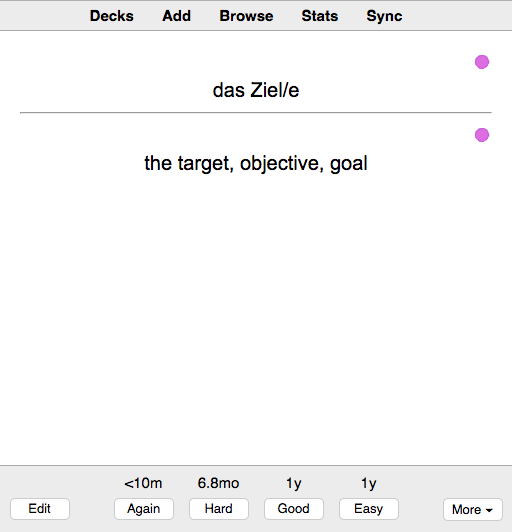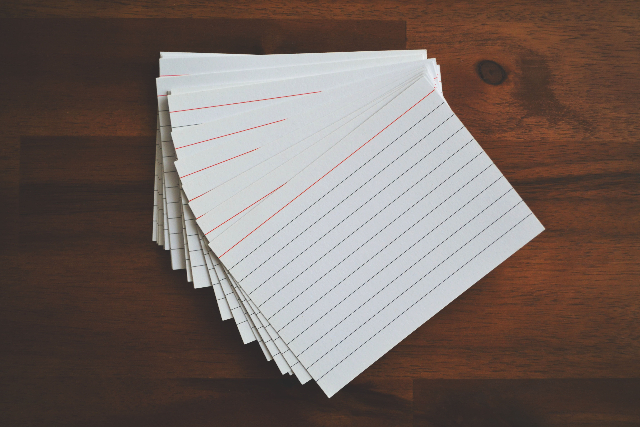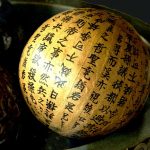Anyone who has used Anki knows that it is completely worth it for language learning! Anki is a tool that enables users to create flashcards well using a spaced repetition system (SRS) style of learning. This makes Anki the perfect tool for language learning while also enabling you to create your own flashcards to practice specific vocabulary. Anki uses an evidence support method of testing old flashcards at the right length of time so that you do not forget old words, or spend an unnecessary amount of time on flashcards you already know.

When you first use Anki, the first thing that will strike you is the simplicity of the flashcard screen. This is perhaps one of the biggest critiques of the app because compared to the gamified learning apps for languages today, something is clearly different. To some, this can be a turn-off to using Anki because it appears too simple. Others however find that the basic interface when reviewing flashcards is an advantage to using the app.
The other side of the app is the option for creating new flashcards. This is a fairly straightforward process if you want it to be. Anki gives the user options for creating types of flashcards including the layout of each flashcard and the writing on it.
To go more in-depth, users are able to add multiple fields to each card (ie: English/Spanish fields and a third field for the word used in a cloze sentence). You then have the freedom to choose which of these fields can be used as the question and which fields will be shown for the answer.
You’ll notice my flashcard above has a purple dot in the corner, this is so that I can include flashcards from multiple target languages in the same deck, and if the English side is shown first, I know which language the answer needs to be in. There’ll be more about this and other tips and tricks in the post here.

What Are The Benefits Of Anki?
The biggest drawcard of Anki is the SRS technique discussed below, which is incorporated into all flashcard decks.
Because Anki is open source, there is a multitude of add-ons that are available for use. These add-ons perform a variety of features, such as assistance with flashcard creation and the Anki interface. These are not a necessity for using the app, and Anki is still very functional without these.
It is very easy to import and export decks from the app, which means it is very easy to use decks created by other people. This can be particularly helpful if you are looking for the specific vocabulary of a particular subject in your target language or simply don’t have the time to create your own vocabulary decks. I discuss learning vocabulary and the reason for creating your own flashcards in this post.
Anki allows you to bulk-add flashcards to its program, so you won’t need to spend hours and hours making each individual flashcard. I personally have done this before I found these tricks, and while it had the benefit of helping me in my learning, it was tedious and took way too long. That’s why I’ve written this post about ways to easily add large amounts of flashcards to Anki for you to learn from my mistakes.
If you do have the time, I would recommend that after looking at some pre-made decks, you spend some time creating some of your own decks. This will help you learn the vocabulary but also enable you to put the flashcards into a specific format that you like (ie: showing plural forms, gender, verb conjugations, etc). the availability of decks from other people so that you don’t need to always build your own (although this is recommended as it is a form of learning in itself).
Another benefit is the low cost of Anki. Anki is free to use, with no subscription, for all platforms with the exception of iOS. At the time of writing, Anki costs $18.00 US for a single one-off purchase to enable its use on iPhone.

What Is The Spaced Repetition System?
The spaced repetition system (SRS) is a scientific-based method of using flashcards that solves the common issue that can arise from flashcard revision.
Imagine you had a box of 1,000 flashcards that you look at each day. Each time you review these cards, you may pick 100 cards from the front of the box to review. You would pick them up one at a time, think about the answer to the card, check the back of the card, and put it into the back of the box.
After you have gone through all 1,000 cards you’re back to the start. Some cards will have been easier for you than others, but if you want to revise this deck again, there is no system for sorting the easy and difficult cards so your time spent revising is maximized.
The SRS system will take cards you have marked as easy or hard to learn and sort them based on their ease of learning. Next time you go to review, it will show you some of the more difficult cards and fewer of the easier cards. Over time you will revise all 1,000 cards of the deck, but in an order that most benefits your learning.
This can be done in real life as well, which will give you a simplified understanding of what the SRS system does in Anki.
When picking cards from the box, put them either on the left side of the deck (for a correct answer) or to the right of the deck (for an incorrect answer). When you come back to review, take 70 cards from the big deck (new cards in Anki), 20 from the incorrect pile as well as 10 from the correct pile. Repeat this process, placing cards in either the incorrect or correct pile. When the original deck is separated into correct and incorrect piles, you can start to draw a bigger number of cards from each pile at each review.
Anki allows each user to choose how many cards it will show you per day, as well as how many cards from the new, easy and difficult piles it will show for these reviews.

Is Anki Worth The Cost For iPhone?
If you’re unsure if you want the app on your iPhone, you can use the website version as a temporary test to see if you will use it. The website version works much the same as the app but is somewhat less functional. One of the benefits of using the app itself is that you are able to study offline, which may be a benefit to you.
The Anki app will easily be one of the most valuable purchases are you able to make for your language learning journey. A one-off cost does not compare to the amount of time that you were able to spend across the next years of language learning using this app. The ability to create your own flashcards use decks made by other people, and the flexibility to study using this app at any time makes it an invaluable resource for any language learning.
Because you are able to sync across platforms, having an app on your phone and your computer is quite easy.

Is There Anything Similar To Anki?
There are several apps that have the name Anki, however, they are all independent. The word Anki means Memorisation in Japanese, which, combined with the success of the Anki App, means there are now many programs that include this word.
An example of this is an app called AnkiApp, which is completely separate from Anki. Some more popular apps that could be used instead of Anki would be Memrise or Lingvist. Although Memrise is free, it appears that a subscription is required for Lingvist. Both of these apps also say that they use an SRS method for flashcards. Any flashcard app will work for language learning, however, in order to make sure that your time is well spent, it would be most beneficial to make sure the SRS method is used.
It is a good idea to have a look around and find a system that works for you, once you have found that system, stick with it. If you will be learning a language for several years, it would be better to have your flashcards practiced on the same system for the whole time, if possible.
One of the other benefits to Anki is that it is quite easy to import a large number of new flashcards at a time. This can be quite useful when you first start a new language and you wish to import, for example, the first 1,000 most common words in that language.
One way of doing this is having an Excel spreadsheet with new words so that when you import this data, all Anki needs to be told is which column relates to the English or Foreign Language so that the words go in the correct place for each card.

Can I Learn A Language Just With Anki?
Keep in mind that Anki is just a language-learning tool. Being able to perfectly memorize 6,000 or 10,000 words in your target language is not the only language skill you need. The other parts of language learning, such as speaking and listening are not going to be achievable using only Anki.
You can also put grammatical flashcards into the mix, to help with learning specific grammatical concepts, however, you will need to practice using these concepts in either speech or writing to make sure they are ingrained in you.
Because Anki is a flashcard app, it can only give you yes/no answers, rather than let you practice speaking, listening, or creating full sentences. This will need to be practiced using other language learning tools, or by speaking to speakers of your target language.
Some other apps that I would recommend, particularly for beginning to learn a language, would be Duolingo. I have written some further information about the use of Duolingo that you can read about. For example: If you’re not sure if Duolingo is effective for language learning, there is information that can be found. Alternatively, if you’re ready to start using Duolingo, but not sure which language is the easiest for you to learn, you can find that out as well!
Finally, if you want to know some of the ins and outs of the Duolingo app itself, there is more information to be found as well.

Can I Learn Anything Else Using Anki?
Whether language learning is for a hobby or a career, keep in mind that Anki will enable you to practice other topics as well. Geography is a great example of this, including country locations, shapes, flags, and capital cities.
Anki is also popular particularly for medical students to practice with, as the sheer amount of knowledge they require means a structured learning process is invaluable.
You are able to have a quick browse of the available pre-made decks, there are decks for subjects including Anatomy, Biology, Chemistry, Geography, History, Law, Math, Music, Pathology, and Physics! The sheer range of learning possibilities means that this app is viable for practically anyone seeking more knowledge.
- Should Everyone In The World Speak A Universal Language?

- The Power of Immersing Yourself In A Language For Learning

- Start Your Language Learning Journey: Duolingo And Other Methods

- Does Learning A Language Help You Learn How Others Think

- Can You Learn a Language Without Learning Its Culture?

- Unlock Fluent Expression: Sentence Builders Across Languages

- Hidden Gems: Underrated Duolingo Languages Worth Learning

- The Ultimate German Pronunciation Guide

- Where To After Finishing Duolingo For Language Learning










